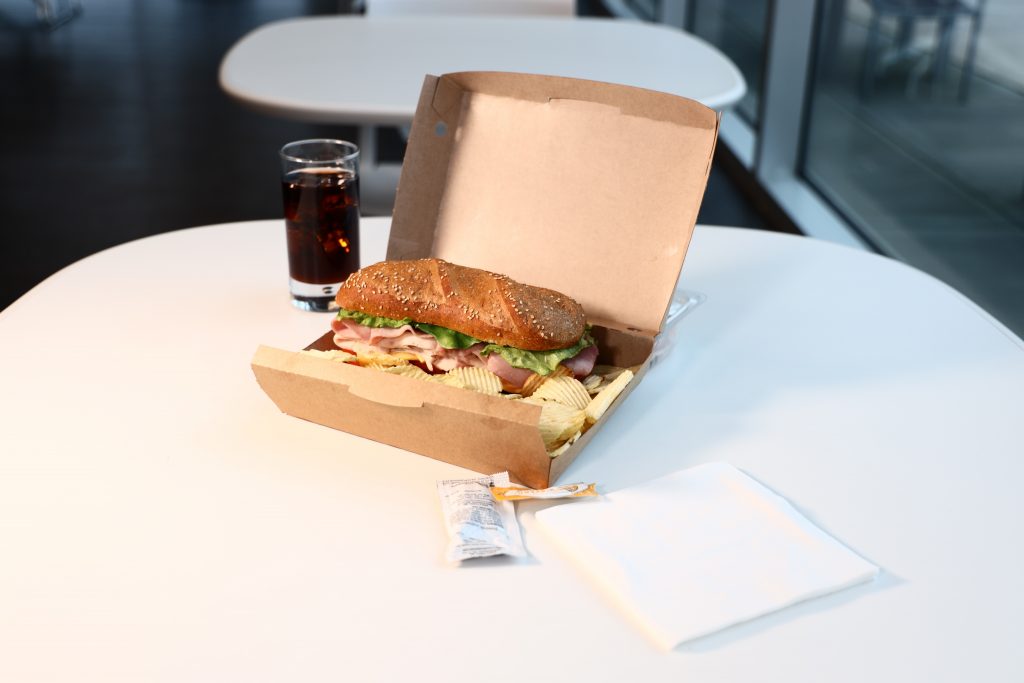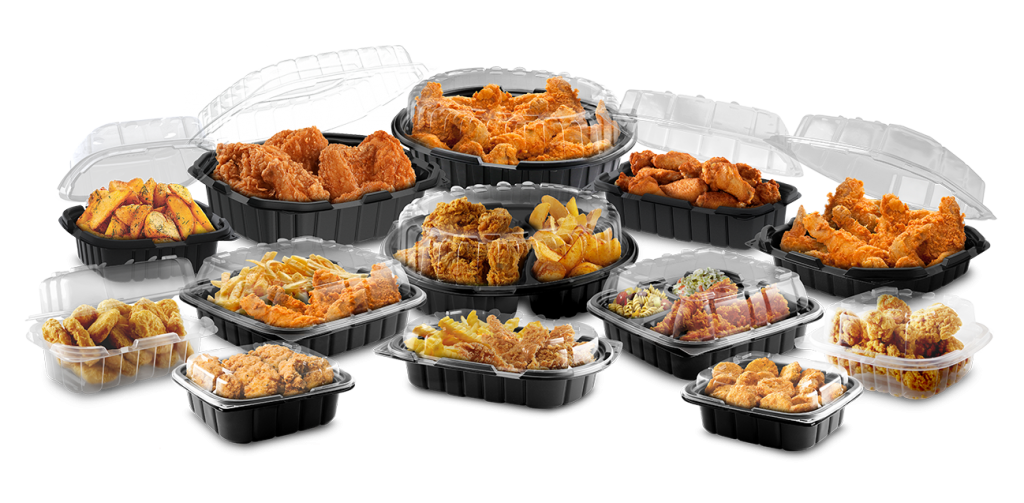Packaging During the Pandemic
April 1, 2021 | 8 min to read
Amid the COVID-19 pandemic, packaging for food has faced heightened scrutiny, with consumers prioritizing safety and sustainability. Companies are shifting to reusable, renewable, and recyclable solutions, driven by increasing demand for secure, tamper-evident options. Industry experts, including Mary Klakulak-Sclafani and Kurt Richars, emphasize the need for packaging that keeps food safe and appealing as more consumers opt for convenience through delivery and curbside pickup. A focus on clarity and recyclability is critical for retail success.

Packaging for food has never been as scrutinized as it has been during the COVID-19 pandemic, as consumers want assurances that the food they eat is safe.
During the pandemic, consumers reported using higher levels of single-use containers and are now looking for reusable, renewable and recyclable options. That’s why many companies working with products consumed at the deli counter are changing their ways.
Mary Klakulak-Sclafani, vice president of market innovation strategy for Genpak, headquartered in Charlotte, NC, notes that as third-party delivery options steadily increase due to the pandemic, secure and tamper-evident packaging options are trending as they alert end-users if a package is damaged or altered in any way.
“Overall, retail foodservice and restaurant operators are seeking solutions that ensure consumers routinely receive safe, well-presented food,” she says.
Additionally, sustainable packaging is at the forefront of the industry as consumers and legislation throughout the U.S. push for manufacturers to incorporate recyclable content, create reusable containers and innovate bio-sustainable solutions. If a food container is not recyclable, consumers are pushing for them to be reusable and serve as an addition to food storage.
“Throughout 2021, we believe more recyclable, plant-based and reusable packaging solutions will be introduced within the deli and foodservice industry,” says Klakulak-Sclafani.
Kurt Richars, director of marketing for St. Louis, MO-based Anchor Packaging, says prepared food offerings from supermarket retailers continue to expand in variety and quality, directly competing for restaurant dining customers, and the pandemic has accelerated this trend.
“Convenience will also continue to be important as we come out of the pandemic and family activities return to normal,” he says. “What is new is that shoppers have increased their adoption of curbside pickup and delivery while making fewer, more mission-driven trips to the store. Deli managers require packaging that keeps food safe, fresh and appealing in-store and enable it to arrive home looking and tasting great—whether fresh, cold or hot-to-go.”
Derek Skogen, senior product manager of Madison, WI-based Placon, notes that since COVID-19 has forced retailers to adapt and offer more prepared deli options, tamper-evident packaging continues to see increased demand for deli products, as consumers want to visibly see if a product has been opened or tampered with prior to purchase.
“Consumers want to see what they are buying, so clarity is key when it comes to enhancing the product on shelf for retailers,” he says. “In some cases, you will see polypropylene used for items that may require re-heating or if they are hot/cold filled during the manufacturing process, such as soups and certain dips or sauces. Being able to recycle the container after use is becoming more important across all retailers.”

Material Matters
With the changes of the past year, consumers have used significantly more packaging than before.
“Consumers want packaging that keeps food safe, hot and fresh while also being sustainable,” says Richars. “They want to purchase products that are better for the environment, and they rely on retailers to do the same. Examples include mineral-filled plastics that reduce the amount of resin used, recyclable options that result in less waste going to a landfill, and reusable alternatives such as polypropylene, which is both dishwasher- and microwave-safe.”
As consumers and state legislation push for eco-friendly solutions, companies are, more than ever, constructing packaging with recyclable materials and integrating natural resources that make end products biodegradable or compostable.
“As an alternative to petroleum-based products, plant-based materials, such as bioresins, are being utilized to create products with eco-friendly life cycles,” says Klakulak-Sclafani. “Environmentally-sound materials are a viable solution to fossil-fuel-based, single-use containers.”
Packaging organizations are revolutionizing the chemistry of food packaging to include earth-derived substances, including mushrooms, sugarcane, wheatgrass and canola oil.
Peggy Cross, founder and CEO of sustainable utensil company EcoTensil Inc., based in Corte Madera, CA, says the company is working with a new paperboard, which is third-party verified as 100% plastic-free, 100% recyclable, 100% compostable food grade, and yet it has terrific barrier properties.
“Honestly, this is the Holy Grail we have been searching for for years,” she says. “It was designed for food trays, coffee cups and the like, and it is perfect for our cutlery because it is long-lasting, has no taste and features a satiny smooth surface. It enhances the consumers’ experience of the food, unlike wood. We call our line, which uses this paperboard, our ‘AquaDot’ line.”
Recyclable solutions are also hotter than ever.
“Many of the deli products we offer are made using our EcoStar post-consumer recycled PET,” says Skogen. “EcoStar is made from recycled PET bottles and thermoforms that we convert and turn back into food-grade packaging.”
Tech Talk
As the packaging industry evolves, technology is progressively making things better. From design and material development to end-user engagement, packaging companies are continually introducing new methods to showcase products and increase overall functionality.
For example, 3D printing is an emerging technology and an extremely effective tool during prototyping. Companies are also using interactive QR codes on packages to educate and persuade consumers to purchase products.
“At Genpak, we continuously test packaging functionality utilizing full engineering capabilities, including a fully integrated pilot plant and 3D printing to meet our customers’ exact specifications,” says Klakulak-Sclafani. “Our quality testing ensures that finalized products are not only functional but are stackable and can be efficiently stored by restaurant and grocery operators.”
The past year’s changes have raised customer expectations for what is possible, as retailers and restaurants served them more meals at home.
“Success means delivering taste by maintaining temperature and protecting crispiness while preventing leaks during transit,” says Richars. “Packaging solutions are available for all deli-prepared favorites. For example, Crisp Food Technologies containers by Anchor Packaging use a patented cross-flow ventilation design to remove excess moisture and keep food hot, crispy and tasting great for up to three hours in a heated display and for 30-minutes in transit.”
Placon has introduced barrier material within its packaging solutions as a way to create a more sustainable packaging solution and are already seeing vast interest from industry-leading brands wanting to use this.
Skogen explains an oxygen barrier material helps block or reduce the amount of oxygen within a sealed package to ensure the product stays fresher and lasts longer.
“For decades, the most common barrier material has been EvOH, which results in most packages using this barrier to be classified as a #7 resin identification code,” he says. “In February 2021, we announced our new OxyStar PET barrier material that uses the No. 1 PET resin identification code. OxyStar is the world’s first thermoformed PET oxygen barrier material that can be recycled just like normal PET food packaging.”

New and Improved
Convenience is another packaging trend as many brands are offering on-the-go snack items or smaller portion solutions that support the on-the-go convenience lifestyle.
“In 2020, we introduced our CrystalSeal reFresh Parfait Cups to support these convenience items,” says Skogen. “This product line provides two different cup sizes (8-ounce and 12-ounce) along with three different lid options and three insert tray or lid options to hold specialty ingredients.”
EcoTensil recently instituted a “return to safe sampling” program, which includes the EcoServe (mini sneeze guard for sampling), the flex dispenser and the EcoSpoon10, allowing delis to reopen olive bars and other hot and cold food bars.
Currently, Genpak is actively innovating food packaging solutions to include renewable resources, bioresins and biopolymers.
“Composed of 100% recycled paperboard, Harvest Choice, our newest line of containers, is a top-tier packaging solution certified by the Sustainable Forestry Initiative,” says Klakulak-Sclafani. “Harvest Choice is PFAS-free, effectively holds and transports sandwiches and sides, is made in the USA, and is compliant with California’s Proposition 65. Harvest Choice comes in six container varieties, including vented containers that maintain food crispness. It is also certified USDA BioPreferred and recyclable.”
Evolution of Sustainability
The infrastructure of sustainable packaging is rapidly evolving, as state and federal governing bodies form legislation that directly affect food packaging production. Currently, there are no federal recycling standards; however, 2020 brought a wave of new plastics and container laws that will directly affect the restaurant and retail foodservice industry.
For instance, several U.S. states continue to explore PFAS regulations. Last year was the first time that a federal bill was introduced to mandate PFAS as a hazardous substance.
“Sustainable, earth-friendly packaging is no longer a trend but is the next generation of food container solutions, as global corporations form waste-reduction strategies,” says Klakulak-Sclafani.
Legislative changes and difficulty in recycling or composting have significantly reduced the appeal for certain packaging types, including foam and PFAS-coated fiber containers. Alternatively, polypropylene containers are microwave- and dishwasher-safe, and both PP and PETE containers can be recycled curbside in most communities.
Skogen says the right packaging can and will drive incremental sales, and that’s why so much effort has been made towards sustainability.
“Today, many consumer brands have realized the importance of reducing their overall carbon footprint,” he says. “Nielsen market data tells us that consumers are willing to pay for sustainable packaged products. We feel it is our job to provide our customers with package clarity and performance with a sustainable message to support their products in a retail setting.”
Merchandising and Labeling
Packaging is what protects the product, enhances the shelf appearance and can be a key factor in the consumer purchase decision.
Klakulak-Sclafani notes packaging is vital in relation to merchandising and labeling.
“The look and feel of packaging can serve as a key determinant in a consumer’s purchasing decision,” she says. “For instance, modern, minimalistic labeling coupled with packaging that allows 360-degree visibility is likely to provide an excellent first impression to a first-time buyer. Packaging serves as the foundation of the look and feel of retail foodservice products and can instantly interest or deter consumers from purchasing goods.”
Throughout the industry, there is a great focus on research and development, as packaging companies seek innovative ways to reduce waste and make packaging more efficient during transport.
“Overall, the benefits to new, innovative packaging include safer transport, cleaner design and readability, the incorporation of renewable resources, and a decrease of single-use materials,” says Klakulak-Sclafani. “If products are not produced with renewable resources and do not have an eco-friendly end-of-life cycle, operators and consumers are opting towards reusable containers.”
Deli has the food items to compete and win more meals. The key to success is using packaging that delivers on customers’ higher expectations.
“Packaging gives shoppers confidence in product safety and hygiene, which is of much greater value now,” says Richars. “Deli managers who offer a full assortment of prepackaged, fresh-prepared items can build trust and create repeat business. Consumer safety concerns will remain elevated, which gives delis an opening to show their customer commitment by addressing this vital need.” DB
1 of 9 article in DeliBusiness Apr/May 2021

